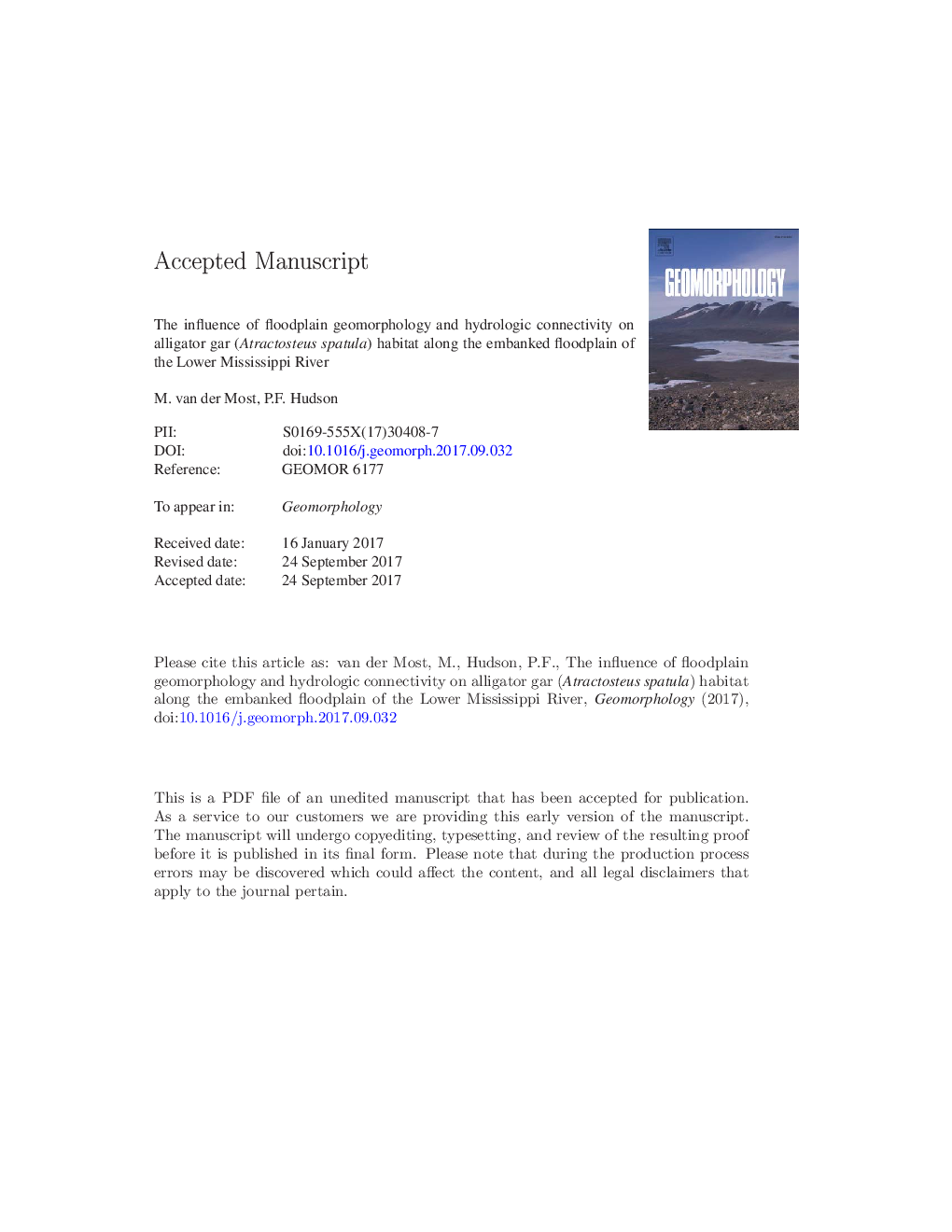| Article ID | Journal | Published Year | Pages | File Type |
|---|---|---|---|---|
| 8908264 | Geomorphology | 2018 | 75 Pages |
Abstract
The floodplain geomorphology of large lowland rivers is intricately related to aquatic ecosystems dependent upon flood pulse dynamics. The alligator gar (Atractosteus spatula) is native to the Lower Mississippi River and dependent upon floodplain backwater areas for spawning. In this study we utilize a geospatial approach to develop a habitat suitability index for alligator gar that explicitly considers hydrologic connectivity and the floodplain geomorphology along a frequently inundated segment of the Lower Mississippi River. The data sets include Landsat imagery, a high-resolution LiDAR digital elevation model (DEM), National Hydrography Dataset (NHD), and hydrologic and geomorphic data. A habitat suitability index is created based on the extent and frequency of inundation, water depth, temperature, and vegetation. A comparison between the remote sensing approach and the NHD revealed substantial differences in the area and location of water bodies available for alligator gar spawning. The final habitat suitability index indicates that a modest proportion (19%) of the overall embanked floodplain is available for alligator gar spawning. Opportunities exist for management efforts to utilize engineered and natural geomorphic features to facilitate hydrologic connectivity at flow levels below flood stage that would expand the habitat of alligator gar across the floodplain. The study results have direct implications regarding environmental restoration of the Lower Mississippi, an iconic example of an embanked meandering river floodplain.
Keywords
Related Topics
Physical Sciences and Engineering
Earth and Planetary Sciences
Earth-Surface Processes
Authors
Merel van der Most, Paul F. Hudson,
